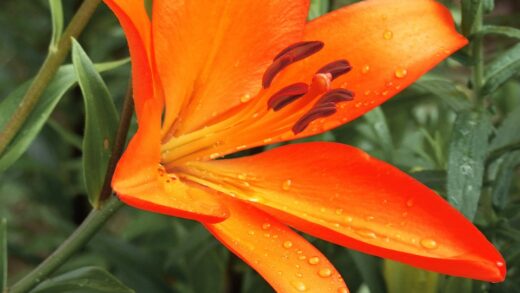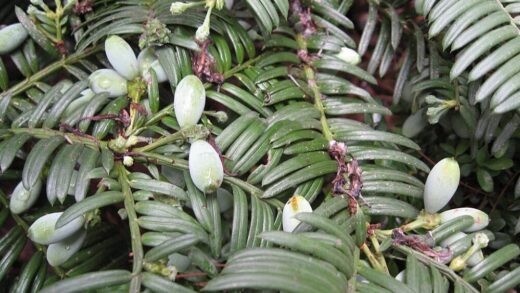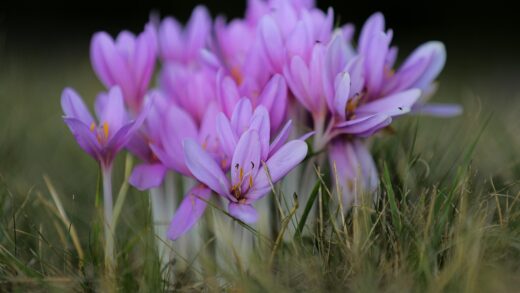Planting an amaryllis bulb is a straightforward process that promises a spectacular reward of large, vibrant blooms. The key to success lies in providing the right foundation from the very beginning, which includes selecting a high-quality bulb and using the correct potting technique. A healthy bulb should be firm, dry, and free of any blemishes or signs of mold, with a size that feels substantial for its type. The initial planting sets the stage for the entire growth cycle, so careful attention to detail at this point is crucial for developing a strong plant capable of producing magnificent flowers. Choosing the right container and soil mix is just as important as the bulb itself, as these elements provide the physical support and nutritional environment the plant needs to thrive.
The first step in planting is to choose an appropriate pot. The container should be only slightly larger in diameter than the bulb, leaving about 2-5 centimeters of space between the bulb and the edge of the pot. This snug fit helps to manage soil moisture and encourages the plant to focus its energy on flowering rather than excessive root growth. It is absolutely essential that the pot has drainage holes at the bottom to allow excess water to escape, as amaryllis bulbs are highly susceptible to rot in waterlogged soil. A heavier pot, such as one made of terracotta or ceramic, is often recommended to provide stability and prevent the tall, top-heavy plant from tipping over when in full bloom.
Next, preparing the potting medium is a critical step. Amaryllis requires a rich, well-draining soil to flourish. A high-quality, sterile potting mix is a good base, but it should be amended to improve its drainage capacity. Adding components like perlite, coarse sand, or fine orchid bark can significantly enhance the aeration and drainage of the soil, which is vital for preventing root and bulb rot. A good general recipe is to mix two parts standard potting soil with one part perlite. This mixture will retain enough moisture for the plant’s needs while allowing excess water to pass through freely, creating an ideal environment for the root system.
When placing the bulb in the pot, positioning it at the correct depth is paramount. The bulb should be planted so that the top one-third to one-half of it remains exposed above the soil line. This technique helps to prevent moisture from collecting around the neck of the bulb, which is the most common entry point for fungal diseases that cause rot. After positioning the bulb, fill the pot with the prepared soil mix, gently firming it around the bulb’s base to hold it securely in place. The pointed end of the bulb should be facing upwards, and the flat basal plate, where the roots emerge, should be in contact with the soil.
The initial watering process
After the bulb has been securely potted, the initial watering is a crucial step that must be done with care. The goal is to settle the soil around the bulb and provide just enough moisture to awaken it from dormancy without creating a saturated environment. Water the soil thoroughly one time, allowing the excess to drain completely from the bottom of the pot. After this initial watering, it is important to be patient and wait. Do not water the plant again until you see the first signs of new growth, which is usually the tip of the flower stalk or a leaf emerging from the top of the bulb.
More articles on this topic
This period of waiting can take anywhere from two to eight weeks, depending on the specific cultivar and the condition of the bulb. During this time, the soil should be kept barely moist, almost on the dry side. Overwatering before active growth has begun is the single most common mistake made by novice growers and is a primary cause of bulb rot. The bulb contains all the water and nutrients it needs to initiate growth, so providing excess water at this stage can be detrimental. Checking the soil with a finger is the best way to gauge moisture levels; if it feels damp just below the surface, there is no need to add more water.
Once the new green shoot is about 5 centimeters tall, a more regular watering schedule can be established. At this point, the plant is entering a phase of active growth and will begin to draw more moisture from the soil to support the developing stalk and leaves. Begin watering whenever the top 2-3 centimeters of the soil feel dry to the touch. This approach ensures that the roots receive consistent moisture without becoming waterlogged. Always water the soil directly and avoid pouring water over the crown of the bulb itself.
Throughout the growth and flowering period, maintaining this watering discipline is key. The frequency of watering will depend on factors such as the ambient temperature, humidity, and the size of the pot. Smaller pots tend to dry out more quickly than larger ones. As the leaves develop and expand, the plant’s water requirements will increase. However, the fundamental principle remains the same: allow the soil to partially dry out between waterings to maintain a healthy, rot-free root system and a thriving amaryllis plant.
Propagation through offsets
Propagation is the rewarding process of creating new plants, and with amaryllis, the most common and simplest method is through the division of offsets, also known as bulbils or daughter bulbs. These are small bulbs that form at the base of the main, or mother, bulb. Over time, as the mother bulb matures and thrives, it will naturally produce these offsets as a means of vegetative reproduction. Allowing these small bulbs to develop for a couple of years while still attached to the parent plant gives them the best chance of survival once separated.
More articles on this topic
The ideal time to separate offsets is during the plant’s dormancy period, typically when you are repotting the main bulb every two to three years. At this time, you can unpot the entire plant and gently shake the soil from the roots to get a clear view of the bulb cluster. The offsets will be clearly visible, attached to the basal plate of the mother bulb. It is best to wait until an offset has developed its own set of roots and is at least one-third the size of the mother bulb before attempting to separate it. This ensures it has enough stored energy to survive on its own.
To separate the offsets, you may be able to gently pull them away from the mother bulb with a slight twisting motion. If they are firmly attached, it is better to use a clean, sharp knife or sterilized pruning shears to make a clean cut at the point of connection. Try to ensure that a portion of the basal plate and some roots remain attached to the offset. After separation, it is a good practice to allow the cut surfaces on both the mother bulb and the offset to air dry for a day or two. This callusing process helps to prevent the entry of pathogens that could cause rot when the bulbs are replanted.
Once the offsets are separated and callused, they can be planted in their own individual pots. Use the same well-draining soil mix and planting technique as you would for a mature bulb, ensuring the top third of the small bulb is above the soil line. These young bulbs will focus on vegetative growth for the first couple of seasons. It is important to provide them with plenty of light, regular water, and fertilizer during their growing season to encourage them to grow to a mature, flowering size. With proper care, these new plants will typically produce their first blooms within two to three years.
Propagation from seeds
Growing amaryllis from seed is a longer and more involved process than propagating from offsets, but it can be a fascinating experience, especially for plant breeders or patient hobbyists. Seed propagation introduces genetic variability, meaning the resulting plants may not be identical to the parent plant and can display a range of new and interesting characteristics. The process begins with the pollination of the flowers. This can be done by transferring pollen from the anther of one flower to the stigma of another using a small, soft brush. If pollination is successful, the base of the flower will begin to swell, forming a seed pod.
The seed pod will take several weeks to mature, typically turning yellow or brown and beginning to split open when it is ripe. It is important to harvest the seeds at this stage before the pod fully opens and spills them. Inside each pod, you will find numerous black, papery seeds. These seeds have a relatively short period of viability, so it is best to sow them as soon as possible after harvesting for the best germination rates. Fresh seeds will give you a much higher chance of success than seeds that have been stored for a long period.
To sow the seeds, prepare a shallow tray or pot with a fine, sterile seed-starting mix that is well-draining. Moisten the mix thoroughly before sowing. The seeds can be scattered on the surface of the mix or planted on their edge, just slightly pushed into the soil. Some growers prefer to float the seeds in water for a day to initiate germination before planting. After sowing, cover the seeds with a very thin layer of the mix or fine vermiculite. Place the tray in a warm location with bright, indirect light and cover it with a clear plastic dome or bag to maintain high humidity.
Germination can take anywhere from two to six weeks. During this time, keep the soil consistently moist but not waterlogged. Once the seedlings emerge, they will look like small blades of grass. At this stage, you can remove the plastic cover to increase air circulation. Continue to provide bright light and consistent moisture as the small bulbs begin to form at the base of the leaves. It is a slow process, and it will typically take anywhere from three to five years of careful cultivation before the seed-grown amaryllis bulb is large enough to produce its first flower.
Advanced propagation techniques
For the more advanced horticulturist, techniques such as bulb chipping and twin-scaling offer a way to produce a much larger number of new plants from a single bulb compared to offset division. These methods involve intentionally cutting the bulb into sections, with each section having the potential to regenerate into a new, complete bulb. These techniques are often used in commercial production and by serious hobbyists to rapidly multiply a particularly rare or desirable cultivar. They require sterile conditions and careful execution to be successful.
Bulb chipping involves cutting a dormant amaryllis bulb vertically into several wedges, much like an orange. A mature bulb can be divided into eight, sixteen, or even more sections, depending on its size. The crucial element is that each “chip” or section must contain a piece of the basal plate, which is the flat, bottom part of the bulb from which the roots grow. It is this basal plate tissue that contains the meristematic cells responsible for generating new growth, including the formation of new bulbils.
After cutting the bulb into chips, the sections are treated with a fungicide to prevent rot and then placed in a moist, sterile medium like vermiculite or a mix of peat and perlite. The bag or container is then sealed and kept in a dark, warm place for several weeks or months. During this incubation period, tiny new bulbils will begin to form between the scales on the piece of the basal plate. It is a slow process that requires patience and a sterile environment to prevent fungal infections from destroying the chips.
Once the newly formed bulbils are large enough to be handled and have started to develop their own roots, they can be carefully separated from the original chip and potted individually. Twin-scaling is a more refined version of this technique, where the bulb is cut into even smaller sections, each consisting of two scales connected by a piece of the basal plate. This method can produce an even greater number of new plants from a single parent bulb. Both chipping and twin-scaling are fascinating but challenging methods that offer a deep dive into the regenerative capabilities of these remarkable plants.


















